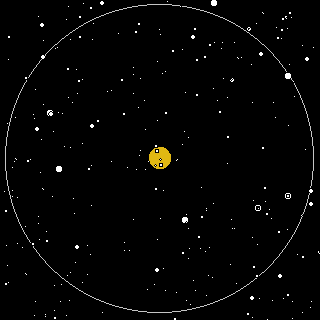|
Burnham's
describes M72 as "not one of the more brilliant globulars and
generally may be described as unimpressive except in large
telescopes." M72 may be unimpressive when compared to the
largest and brightest of the globulars, but it is still worth a look
in any instrument, particularly by those who enjoy comparing the
clusters they have observed. This globular is notable because
of its overall loose appearance when compared to others.
William Herschel
described M72 as "a cluster of stars of a round figure but the
very faint stars on the outside of globular clusters are generally a
little dispersed as to deviate from a perfectly circular form."
This is a nice little
globular in my 18-inch f/4.5. At 94x it appeared primarily as
a hazy round spot, with perhaps a few scattered individual stars.
The best view was at 430x. The most striking feature was the
smattering of brighter stars across the face of the cluster,
scattered about quite irregularly over the round glow of countless
fainter stars. I was somewhat struck in general by how much
more irregular this cluster appears than most globulars; it's just
a little ragged. 
The field in an 6-inch f/8 at
50x. North is down and east is to the right.
|